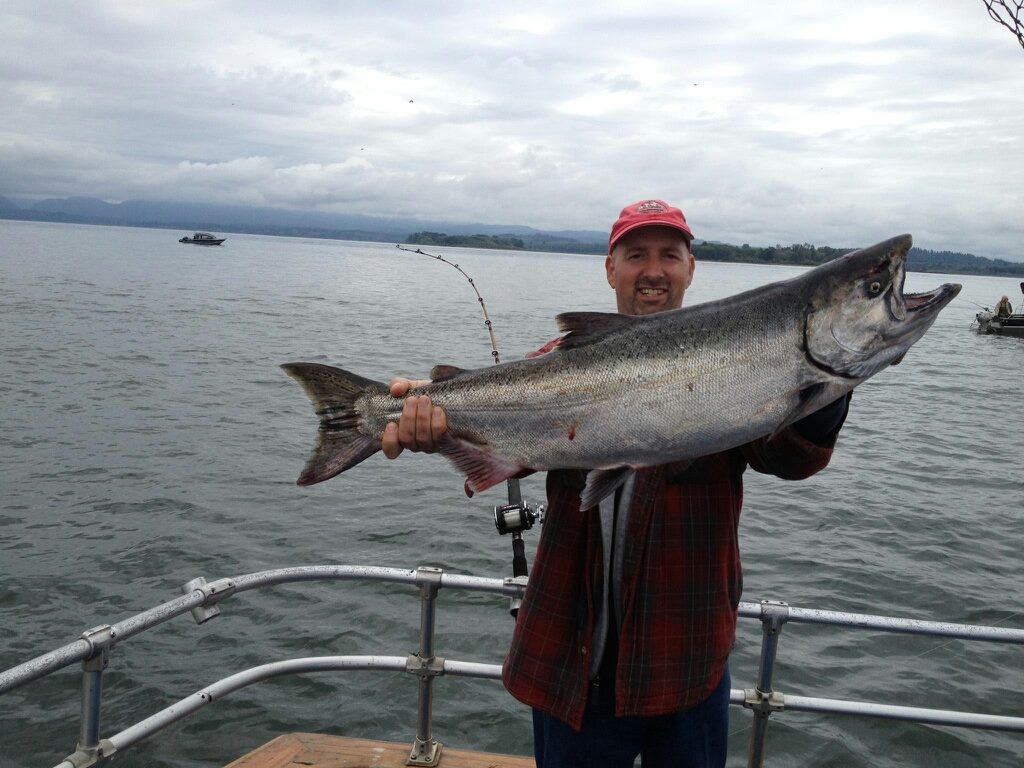
The Biggest Fish I Have Caught to Date
We all know that person that tells tall tails and maybe stretches the truth a bit. Well, this is my tall tail, but with photo proof. 🙂
This is not a monster by any means, but it is the biggest fish I have caught so far.
It could easily have been exaggerated to 50+ lbs, but it actually weighed in at only about 35 lbs.
It was a company event. We chartered several boats out of Astoria. Some boats ventured out to the ocean and some stayed in the river. I got assigned to a boat that remained in the river and we fished above tongue point. Our deckhand chose to just use divers and spinners that day. It seems that many of the charter captains like to keep it simple so they are not tied up with rigging bait on everyone’s line. Simple worked for us that day for sure. Only two fish were caught on our boat. This trophy and my buddy Lee caught one just a pound or so less that day as well.
That was a great day fishing. I have been chasing that bigger one ever sense.
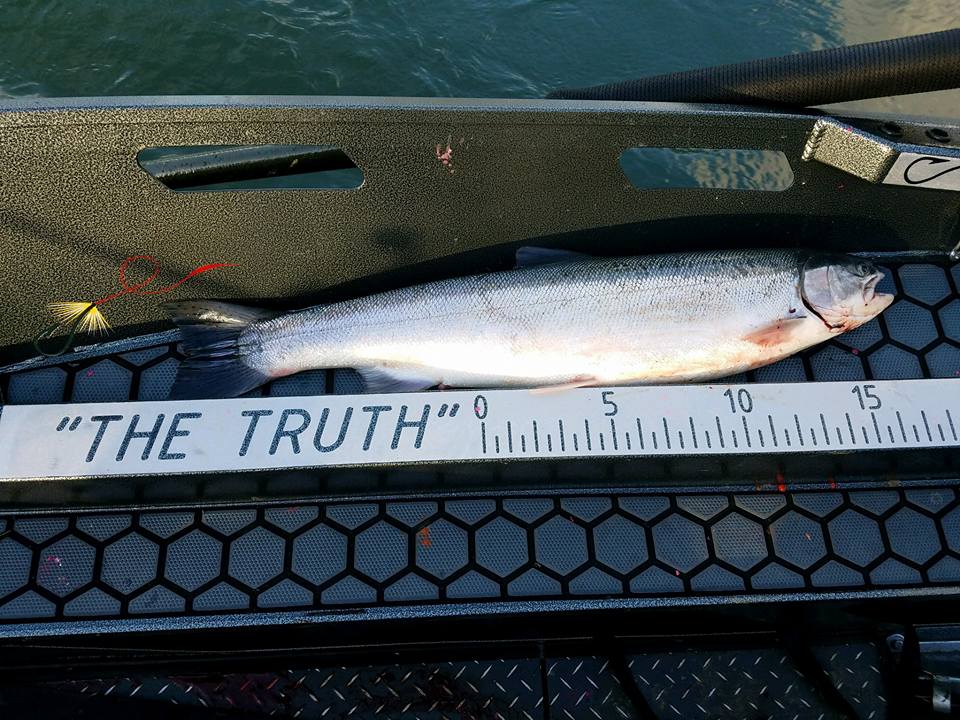
The One That Did Not Get Away
A couple of weeks ago, My buddy Alex text me. “You ready to go fishing yet?” If you know me, that is a rhetorical question. Any of my fishing readers out there need a reliable fishing partner, hit me up. I am kind of a spur of the moment kind of person and fishing usually trumps all other activities. So, I respond to Alex when and where and he replies tomorrow. I am good to go. 🙂
It is kind of late for fall Chinook and a little early for winter Steelhead, so we are not trying to get on the water that hour before sunrise. I always hope for fish, but this day, I was not expecting much. Alex picks me up about 6am and we drive out to the Wilson river, about an hour and a half to two hours away. We launch the Pavati and are fishing by 8:30am. I have to say, I love being chauffeured in the front of that boat. Drift fishing luxury.
The water is low and not so clear. It has a slight green tint to it. The day starts out raining, but by mid day, it is just cloudy with a few sun breaks. We float bobber and eggs through every hole and pull plugs where we can. We are leap frogging with three or four other drift boats and there are a few bank anglers that we pass. At least we are not the only fools on the water. We anchored in a couple of spots to relax here and there. After about five hours of not even a nibble and only seeing one other fish caught, I am ready to accept that this is just not the day. We are anchored up in a hole about two or three turns from the take out. Letting our plugs run, eating lunch and drinking a “beverage”. At least six boats come through and work the hole with eggs and plugs as they pass. Nothing is caught. It is time to pull anchor and work our way to the finish the run. I decided that nothing has worked so far and I was not feeling wrapping another plug. I pulled out a wiggle wart and hooked it up fresh out of the box. 100′ off the anchor, my rod gets nailed. This fish jumps a few times, but it is not your typical steelhead fight. It pulls line and makes a run a couple times and I am getting nervous that I am about to lose this fish. It has been a while since my last tug. We do manage to get it netted and we are blessed with a hatchery. We are both super excited at this time. It turns out, the treble hook had the fishes mouth pinned shut and I guess it is hard for a fish to breath with its mouth closed. This is probably why I did not get the typical acrobatics.

It measured out to about 30″.
Because of that fish, we ended up working the last couple of holes for a few more hours and could not find another. It was a long day, but it was a great day.
I cooked up that fish the following night using my default butter, lemon pepper, garlic salt recipe for Monday Night Football dinner. It was so good. I cannot wait till the next one.
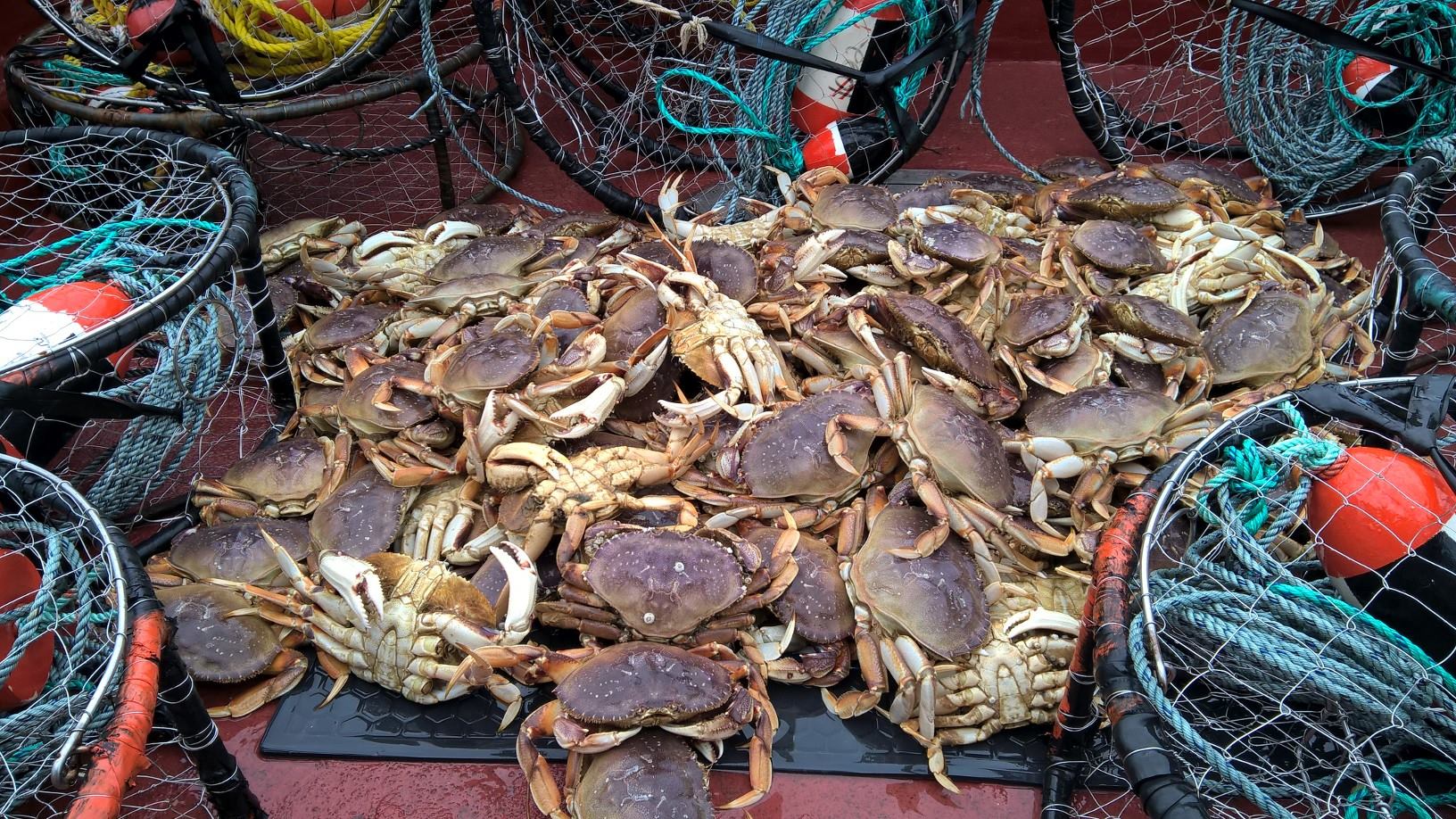
Pacific Northwest Dungeness Crab – A Most Succulent Shellfish
Dungeness crab here in the Pacific Northwest is our heaven.
The crab molt generally between May and August. By October, their shells are starting to get hard and bodies are not quite full of meat. Come November and December time, the shells are nice and hard and the bodies are packed full of meat.
We mostly crab in the Columbia river between Hammond, OR and Ilwaco, WA. When the weather permits, we pop outside in the Ocean and harvest our crab direct from the source. In the ocean, we are not so concerned with the tides sweeping away our crab pots never to be seen like we do in the river. I cannot tell you how many pots we have lost mistiming the tides. I think I have learned my lesson now, but it was an expensive lesson. I have not lost a crab pot is many years now.

To prepare the crab, we try to clean it and have it boiled within a few hours of getting back to the dock. That first bite right out of the pot is what keeps me wanting to catch crab again and again.
Once we have had our fill of all the crab we can eat with our friends and family, my wife have discovered a way to vac-u-seal the remaining crab and freeze it for later. Out of the freezer, we let it thaw and either steam it a bit to warm it up or eat it cold. I am not going to say it is just as good as fresh, but it is pretty darn close.
Unfortunately, this year I have an issue with one of my engines that needs to be looked at before I take the boat out again. We hope to have it ready by spring.
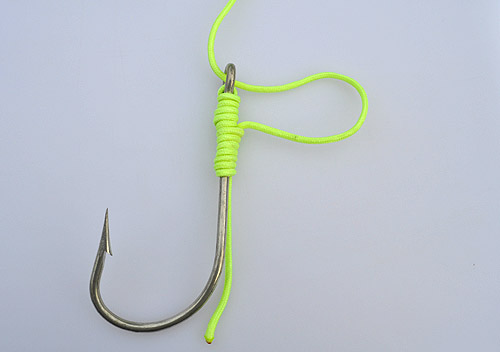
Fishing Knots – The Egg Loop
Thinking ahead of the possibility of fishing this weekend, I remembered that I used my last leader the previous weekend. Time to tie some leaders.
For winter fishing, one of my goto’s is bobber and egg. To help keep the bait on the hook, I tie leader to my hooks using an egg loop knot. This allows the leader to be pushed back through the eye of the hook and wrap around the bait.
How to tie an egg loop knot
Step 1
Cut a section of leader off of the spool.This knot takes up some line, so you’ll want to give yourself anywhere from 12 to 16 inches of extra line until you get a feel for exactly how much line you’ll need. You can always trim the excess. Run the line from the top of the hook down along the shank. For your solid tie bait and hoochie rigs, this will be the trailing hook.

Step 2
Take the running line and start wrapping it around the shank of the hook. I am right handed so I hold the hook with my left hand and wrap with my right hand. For a lot of anglers, the number of wraps you make depends on the fishing application and personal preference. For tying hoochies or herring leaders, I start by making five wraps in a clockwise manner. These first five wraps are done fairly tight against the shank of the hook.

Step 3
After making the first five wraps, you want to take the lead end (not the tag end) and run it back up through the eye of the hook from the bottom to the top. Run it through until you have about one inch of line sticking out of the eye of the hook. Make sure the line is lying flat against the shank of the hook.

Step 4
At this point, you will pick up the same end that you were wrapping in Step 2 and continue wrapping. Put five more wraps on the shank of the hook, but this time, do not make the wraps very tight. You want the wraps just tight enough so they won’t come undone. You will be wrapping over the tag end as well as the lead end.

Step 5
While pinching the hook and wraps with your left hand (if you’re right handed), slowly pull the lead end the rest of the way through the eye of the hook until the entire leader comes out of the eye of the hook.
In Step 4, you didn’t make tight leader wraps because you are pulling the leader underneath those wraps and you don’t want to chafe your leader. Your knot should look something like this when you’re done.

This is why they call it the egg loop knot.

Make sure your leader is well lubricated throughout the entire knot tying process. I usually wet the leader before I start and then again in the middle of the knot. When tying bait leaders for herring or anchovies, it is important to make sure that the tag end of the trail hook is nonexistent. Trim this tag end as close to the knot as possible so you can run this trail hook through the bait without ruining a good piece of bait. You can also make your tag end short and wrap over it in Step 5.

Mount St. Helens – A Majestic Sight
Driving up Interstate 5 yesterday, I passed Mount St. Helens and thought back to when I was about 11 years old and watched the eruption from the street in front of my house . Since this will be seen from the back porch of my new home, I decided to do a little wiki search to learn a little more about it.
 Mount St. Helens or Louwala-Clough (known as Lawetlat’la to the indigenous Cowlitz people, and Loowit to the Klickitat) is an active stratovolcano located in Skamania County, Washington, in the Pacific Northwest region of the United States. It is 96 miles (154 km) south of Seattle, Washington, and 50 miles (80 km) northeast of Portland, Oregon. Mount St. Helens takes its English name from the British diplomat Lord St Helens, a friend of explorer George Vancouver who made a survey of the area in the late 18th century. The volcano is located in the Cascade Range and is part of the Cascade Volcanic Arc, a segment of the Pacific Ring of Fire that includes over 160 active volcanoes. This volcano is well known for its ash explosions and pyroclastic flows.
Mount St. Helens or Louwala-Clough (known as Lawetlat’la to the indigenous Cowlitz people, and Loowit to the Klickitat) is an active stratovolcano located in Skamania County, Washington, in the Pacific Northwest region of the United States. It is 96 miles (154 km) south of Seattle, Washington, and 50 miles (80 km) northeast of Portland, Oregon. Mount St. Helens takes its English name from the British diplomat Lord St Helens, a friend of explorer George Vancouver who made a survey of the area in the late 18th century. The volcano is located in the Cascade Range and is part of the Cascade Volcanic Arc, a segment of the Pacific Ring of Fire that includes over 160 active volcanoes. This volcano is well known for its ash explosions and pyroclastic flows.
Mount St. Helens is most notorious for its major 1980 eruption, the deadliest and most economically destructive volcanic event in the history of the United States.[2] Fifty-seven people were killed; 250 homes, 47 bridges, 15 miles (24 km) of railways, and 185 miles (298 km) of highway were destroyed. A massive debris avalanche triggered by an earthquake measuring 5.1 on the Richter scale caused an eruption[3] that reduced the elevation of the mountain’s summit from 9,677 ft (2,950 m) to 8,363 ft (2,549 m), leaving a 1 mile (1.6 km) wide horseshoe-shaped crater.[4] The debris avalanche was up to 0.7 cubic miles (2.9 km3) in volume. The Mount St. Helens National Volcanic Monument was created to preserve the volcano and allow for its aftermath to be scientifically studied.
As with most other volcanoes in the Cascade Range, Mount St. Helens is a large eruptive cone consisting of lava rock interlayered with ash, pumice, and other deposits. The mountain includes layers of basalt and andesite through which several domes of dacite lava have erupted. The largest of the dacite domes formed the previous summit, and off its northern flank sat the smaller Goat Rocks dome. Both were destroyed in the 1980 eruption.
Mount St. Helens is 34 miles (55 km) west of Mount Adams, in the western part of the Cascade Range. These “sister and brother” volcanic mountains are approximately 50 miles (80 km) from Mount Rainier, the highest of Cascade volcanoes. Mount Hood, the nearest major volcanic peak in Oregon, is 60 miles (100 km) southeast of Mount St. Helens.
Mount St. Helens is geologically young compared with the other major Cascade volcanoes. It formed only within the past 40,000 years, and the pre-1980 summit cone began rising about 2,200 years ago.[5] The volcano is considered the most active in the Cascades within the Holocene epoch (the last 10,000 or so years).[6]
Prior to the 1980 eruption, Mount St. Helens was the fifth-highest peak in Washington. It stood out prominently from surrounding hills because of the symmetry and extensive snow and ice cover of the pre-1980 summit cone, earning it the nickname “Fuji-san of America”.[7] The peak rose more than 5,000 feet (1,500 m) above its base, where the lower flanks merge with adjacent ridges. The mountain is 6 miles (9.7 km) across at its base, which is at an elevation of 4,400 feet (1,300 m) on the northeastern side and 4,000 feet (1,200 m) elsewhere. At the pre-eruption tree line, the width of the cone was 4 miles (6.4 km).
Streams that originate on the volcano enter three main river systems: the Toutle River on the north and northwest, the Kalama River on the west, and the Lewis River on the south and east. The streams are fed by abundant rain and snow. The average annual rainfall is 140 inches (3,600 mm), and the snow pack on the mountain’s upper slopes can reach 16 feet (4.9 m).[8] The Lewis River is impounded by three dams for hydroelectric power generation. The southern and eastern sides of the volcano drain into an upstream impoundment, the Swift Reservoir, which is directly south of the volcano’s peak.
Although Mount St. Helens is in Skamania County, Washington, access routes to the mountain run through Cowlitz County to the west. State Route 504, locally known as the Spirit Lake Memorial Highway, connects with Interstate 5 at Exit 49, 34 miles (55 km) to the west of the mountain. That north–south highway skirts the low-lying cities of Castle Rock, Longview and Kelsoalong the Cowlitz River, and passes through the Vancouver, Washington–Portland, Oregon metropolitan area less than 50 miles (80 km) to the southwest. The community nearest the volcano is Cougar, Washington, in the Lewis River valley 11 miles (18 km) south-southwest of the peak. Gifford Pinchot National Forest surrounds Mount St. Helens.
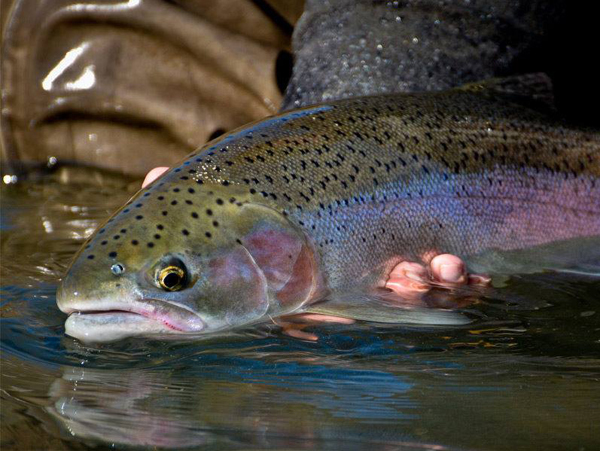
Winter Steelhead – The Fish of a Thousand Casts
This time of year, it is time to bundle up and get out there to chase the ever elusive steelhead, sometimes referred to as the fish of a thousand casts.
 Yesterday, we made the mistake of not checking the wind forecast and headed out to float the Sandy river. Let’s just say, it was a very cold boat ride and we high sided a couple of times in the gusts of wind. Trees were snapping in the background and the sandstorms off the beach were a sight. Needless to say, no fish were caught that day.
Yesterday, we made the mistake of not checking the wind forecast and headed out to float the Sandy river. Let’s just say, it was a very cold boat ride and we high sided a couple of times in the gusts of wind. Trees were snapping in the background and the sandstorms off the beach were a sight. Needless to say, no fish were caught that day.
